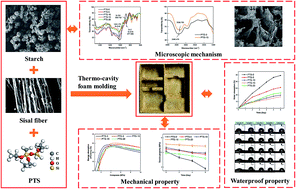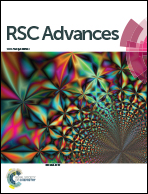Effect of poly-methyltriethoxysilane on the waterproof property of starch/fiber composites with open cell structures
Abstract
Novel starch/fiber composites with open cell structures were proposed through thermo-cavity molding. To overcome the disadvantage of the water sensitivity of the resulting composites, poly-methyltriethoxysilane (PTS) was added as a waterproofing agent. The results showed that the addition of PTS improved the waterproof property of the composites. The composites with 15 g PTS (PTS-15) exhibited an optimal waterproof property. The water contact angle and drop absorption of the PTS-15 composites improved by 59.9% and 223.5%, respectively, compared with the values for those without PTS. Moreover, the addition of PTS could effectively prevent the degradation of the mechanical properties of the composites after water absorption. The rate of tensile property degradation for the PTS-15 composites reached 5.3%, whereas that for the PTS-0 composites totaled 56.6%. The chemical bonds and micro-structure of the composites were investigated to reveal the inherent mechanism of property changes. Fourier transform infrared spectra revealed the formation of new hydrogen bonds between starch and PTS. Hydrophobic groups, including Si–O–Si, Si–C, and Si–OH, were found in the resulting composites, thereby explaining the waterproof property changes. Scanning electron microscopy images showed that the open cell structure of the composites initially became denser and then loosened with the increase in the PTS content, resulting in the initial enhancement and the subsequent weakening of their mechanical properties.



 Please wait while we load your content...
Please wait while we load your content...